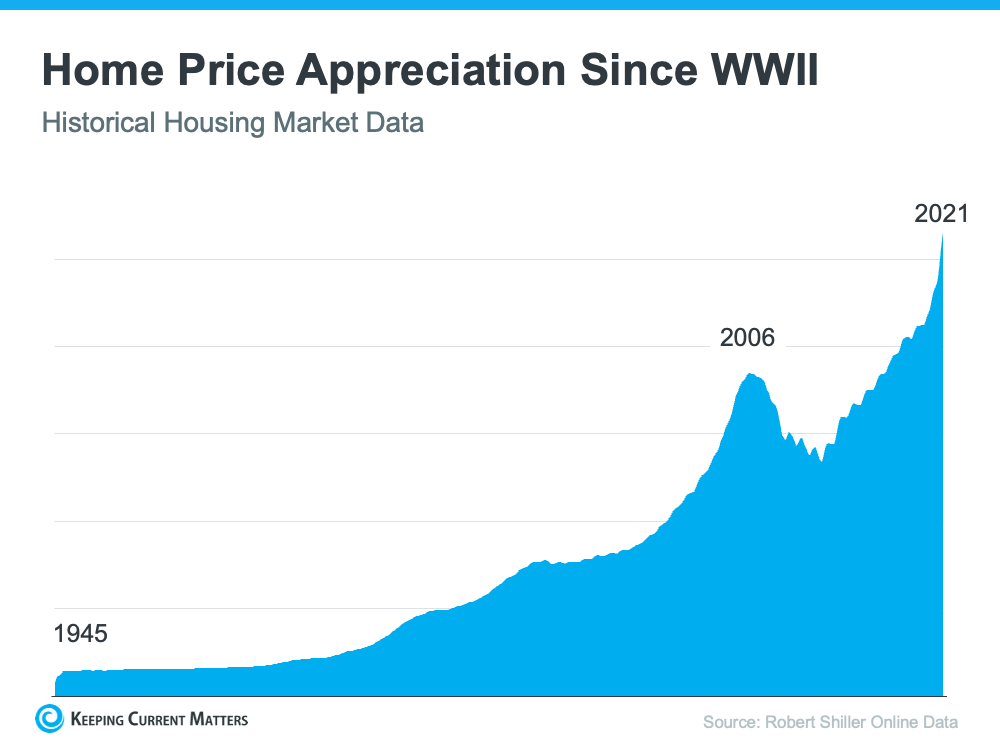Core Inflation Prices Barely Budged in August
While inflation rose 3.5% year-to-year in Aug. – still above the Fed’s 2% goal – it was only up 0.1% month-to-month after backing out higher gas prices.
Core inflation slows
But excluding the volatile food and gas categories, “core” inflation rose by the smallest amount in almost two years in August, evidence that it’s continuing to cool. Fed officials pay particular attention to core prices, which are considered a better gauge of where inflation might be headed.
Core prices rose just 0.1% from July to August, down from July’s 0.2%. It was the smallest monthly increase since November 2021.
Compared with a year ago, (more…)
Credit Score Change Could Help Millions of Buyers
The nation’s consumer bureau took a first step to erase medical debt from credit reports and lending decisions because that type of debt “has little predictive value.”
The Consumer Financial Protection Bureau (CFPB) outlined proposals under consideration – moves that it says would help families recover from medical crises, stop debt collectors from coercing people into paying bills they may not owe, and ensure that creditors don’t rely on data that is often plagued with inaccuracies and mistakes.
“Research shows that medical bills have little predictive value in credit decisions, yet tens of millions of American households are dealing with medical debt on their credit reports,” says CFPB Director Rohit Chopra. “When someone gets sick, they should be able to focus on getting better rather than fighting debt collectors trying to extort them into paying bills they may not even owe.”
“Access to health care should be a right and not a privilege,” Vice President Kamala Harris told reporters as she helped CFPB make the announcement. “These measures will improve the credit scores of millions of Americans so that they will better be able to invest in their future.” (more…)
2 of Every 25 U.S. Homes Worth at Least $1M
While $1M signified luxury property a short while ago, it’s now 8% of the nation’s housing stock – but a large percentage of those homes are still in Pacific Coast states..
The share of homes worth seven figures is on an upswing after dipping to a 12-month low (7.3%) in February because prices are rising on a year-over-year basis after a decline early in the year.
Overall, the median U.S. home-sale price rose 3% in July, the biggest increase since last November, according to Redfin, with luxury home prices rising even faster – up 4.6% year over year to $1.2 million in the second quarter.
Elevated mortgage rates discourage potential home sellers, who are staying put to keep their relatively low mortgage rates. As a result, inventory dropped so low that buyers still in the market are competing for those few homes that are for sale. That’s driving up home prices and pushing many of those listings above the million-dollar mark.
“The supply shortage is making many listings feel hot,” said Redfin Economics Research Lead Chen Zhao. “In most of the country, expensive properties that are in good condition and priced fairly are attracting buyers and in some cases bidding wars, mostly because for-sale signs are few and far between right now.”
The share of homes worth seven figures has doubled since before the pandemic. In June 2019, just over 4% of homes were valued at $1 million or more. (more…)
Home Prices Are Rebounding
You may feel a bit unsure about what’s happening with home prices and fear whether or not the worst is yet to come. That’s because today’s headlines are painting an unnecessarily negative picture. If we take a year-over-year view, home prices did drop some, but that’s because we’re comparing to a ‘unicorn’ year when prices peaked well beyond the norm.
To avoid an unfair comparison to that previous peak, we need to look at monthly data. And that tells a very different and much more positive story. While local home price trends still vary by market, here’s what the national data tells us.
The graphs below use recent monthly reports from three sources to show the worst home price declines are already behind us, and prices are appreciating nationally.

Looking at this monthly view, we can see the past year in the housing market can be divided into two parts. In the first half of 2022, home prices were going up, and fast. However, starting in July, prices began to go down (shown in red in the graphs above). By around August or September, the trend started to stabilize. But, looking at the most recent data for early 2023, these graphs also show that prices are going up again.
The fact that all three reports show prices have been going up for three or more straight months is an encouraging sign for the housing market. The month-over-month data indicates a national shift is happening – home prices are rising again.
Craig J. Lazzara, Managing Director at S&P Dow Jones Indices, says this about home price trends: (more…)
Sales Up, Prices Down After 131-Month Streak
Existing-home sales reversed a 12-month slide in February, registering the largest monthly percentage increase since July 2020, according to the National Association of Realtors® (NAR). Month-over-month sales rose in all four major U.S. regions – but they also all saw year-over-year declines.
February median existing home prices fell for the first time in 131 months– almost eleven years – according to NAR. The median existing-home price for all housing types was $363,000, a decline of 0.2% from February 2022 ($363,700), as prices climbed in the Midwest and South yet waned in the Northeast and West.
Total existing-home sales – completed transactions that include single-family homes, townhomes, condominiums and co-ops – climbed 14.5% from January to a seasonally adjusted annual rate of 4.58 million in February. Year-over-year, sales fell 22.6% (down from 5.92 million in February 2022).
Total housing inventory at the end of February was 980,000 units, identical to January and up 15.3% from one year ago (850,000). Unsold inventory sits at a 2.6-month supply at the current sales pace, down 10.3% from January but up from 1.7 months in February 2022.
Properties typically remained on the market for 34 days in February, up from 33 days in January and 18 days in February 2022. Still, most homes (57%) sold in February were on the market for less than a month.
Buyer types (more…)
Is the U.S. Housing Market at a Crossroads?
Homes reached record prices in early 2022 – so is the current market a housing recession or just a market correction?
Here are some extracts from an article Market at the Crossroads on the Florida Realtors website, with my comments and links to recent articles at the end.
Is there a housing slowdown?
There is widespread consensus that the housing market has experienced a drastic drop-off in activity since its pandemic-prompted heights.
The housing market is “not like the volatile stock market, always going up and down; the housing market moves at a different, slower pace. “The market simply could not, and was never expected to, grow at that pace indefinitely,” Neda Navab, president of brokerage operations at real estate company Compass said. “Whether this trend will continue long enough for the market to enter a true ‘recession,’ or if this is simply the start of an expected ‘correction’ to historic norms, still remains to be seen.”
The case for a housing correction (more…)
Moody’s: Housing Correction Coming – but No Crash
NEW YORK – Moody’s Analytics Chief Economist Mark Zandi predicts that the latest Federal Reserve interest rate hike will cause a housing correction across the United States – but there won’t be a housing crash.
He suggests that the Southeast and Mountain West are the most overvalued housing markets, and the pendulum will swing back down. Cities and states due for a correction include Phoenix and Tucson in Arizona, the Carolinas, northeast Florida, and above all, Boise – “the most overvalued market in the country,” according to Moody’s analysis. (more…)
Why This Housing Market Is Not a Bubble Ready To Pop
According to this report from Keeping Current Matters the major reason for the housing crash 15 years ago was a tsunami of foreclosures. With much stricter mortgage standards and a historic level of homeowner equity, the fear of massive foreclosures impacting today’s market is not realistic.
Homeownership has become a major element in achieving the American Dream. A recent report from the National Association of Realtors (NAR) finds that over 86% of buyers agree homeownership is still the American Dream.
Prior to the 1950s, less than half of the country owned their own home. However, after World War II, many returning veterans used the benefits afforded by the GI Bill to purchase a home. Since then, the percentage of homeowners throughout the country has increased to the current rate of 65.5%. That strong desire for homeownership has kept home values appreciating ever since. The graph below tracks home price appreciation since the end of World War II:
Never Forget
They shall grow not old, as we that are left grow old:
Age shall not weary them, nor the years condemn.
At the going down of the sun and in the morning
We will remember them.

Which country has the fastest growth in home prices?
According to data gathered by money.co.uk, the country with the highest property price increase from 2010 to 2020 was Israel, where there was a staggering 346% rise in costs per square meter.
Switzerland and Germany come next, with increases of 166% and 162%, followed by the United States at 153%. Hungary, Slovakia, France, Portugal, Japan and the United Kingdom round out the rest of the top 10, all with average home price increases of at least 75%.
The Real Estate Market Isn’t in a Bubble
The soaring housing market is prompting more “bubble” fears in some corners, but economists say the housing market isn’t getting overinflated: but it’s just too much demand and too little supply.

“We have strong conviction that we are not experiencing a bubble in U.S. housing,” Vishwanath Tirupattur, a Morgan Stanley strategist, wrote in a note to clients this week.
Lawrence Yun, chief economist of the National Association of Realtors®, agrees. He told Axios last month: “This is not a bubble. It is simply lack of supply.”
Morgan Stanley points out that this isn’t 2006. (more…)
The US is 3.8 Million Homes Short
The U.S. housing market needs nearly 4 million single-family homes to meet the nation’s demand, according to a new analysis from Freddie Mac. The 3.8 million shortfall marks a 52% increase in the housing shortage since 2018.
“This is what you get when you underbuild for 10 years,” says Sam Khater, Freddie Mac’s chief economist. “We should have almost four million more housing units if we had kept up with demand the last few years.”
Lawrence Yun, chief economist of the National Association of REALTORS®, has been among real estate economists leading the calls over the last few years for greater inventory and more homebuilding to meet demand. “We need to build more homes,” Yun told NPR, adding that since the housing crisis more than a decade ago, homebuilders have been building too few homes.
The housing shortage mixed with strong buyer demand since the pandemic is prompting home prices to rise rapidly. The median existing-home price for all housing types in February was $313,000, up 15.8% compared to a year earlier, according to the National Association of REALTORS®.
Where have all the sellers gone?
As I read this New York Times article: Where have all the houses gone? my mind went to Yogi Berra’s line of “it’s deja vu all over again” as I checked my files and discovered that this will be my 5th article with this title – and the first was written in 2013.
Let’s look at the what and the why.
First, the what. This chart shows that inventory has plummeted across the country:

The why (more…)


